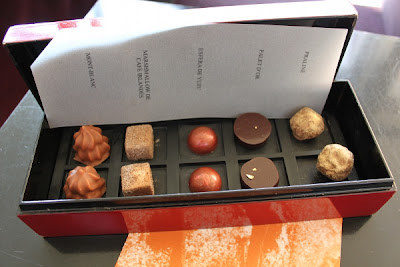One of the highlights of our trip has been the visit to Carrasco. It was a rare privilege which I am happy to share with you.
Carrasco is one of Spain's most renowned producers of Jamon Iberico de Bellota. In my opinion it is one of the worlds greatest food products.
Sadly I can't share the wonderful taste but happily you can now buy Carrasco's Jamon in Australia. It is served in many of our best restaurants around the country and is available from good delis. But before you do, I will try to explain all the different grades of Jamon. There are a lot of inferior Jamons on the market and you will need to know what to ask for.
What is Jamon? Jamon is the Spanish name for a cured leg of pork, similar to proscuttio.
What are the different grades of Jamon?
Jamon Serrano: Is basic cured pork leg from a normal pig, fed on commercial animal feed. It can be good but more often then not it is extremely average. I have tried some appalling serrano in Australia. At this grade you are far better purchasing a good quality Proscuitto di Parma (in my opinion).
Jamon Iberico Cebo: Is made from the Iberico pig, raised free range but feeds legumes and grain. It's curing time is far less then for Jamon Iberico de Bellota. Make sure you do not get this product passed off to you as real Bellota. If the ham is called just Jamon Iberico it will be Cebo grade. Carrasco produce no Cebo grade.
 |
| Iberico pigs roaming in the Dehesa (open fields of acorn trees). Over an acre is allocated to each pig! The acorn trees take a minimum of 100 years to produce bellota (the acorns)! |
Jamon Iberico Recebo: Is made from the Iberico pig which is raised free range in the same country as the Bellota but some of it's fattening is completed with grain and legumes.
Jamon Iberico de Bellota: This is the premium ham. It is made from the Iberico pig, which is raised free range and eats naturally occurring acorns (bellota). It's curing and handling are strictly controlled. Fino only sells Bellota grade Jamon Iberico.
Palleta Iberico de Bellota: Pallet simply means shoulder, which comes from the same animal that produced the Jamon (leg). It is much cheaper then the Jamon but it cured in the same way. In my opinion it makes excellent buying and is every bit as good as the Jamon. The Palleta Iberico de Bellota has become very popular with many of our better restaurants.






















































